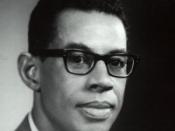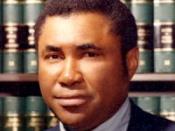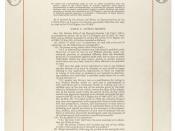Legal Process � PAGE �1�
Legal Process
Schevella Nicholes
MGT 434-Employment Law
Group ID: BSAM09KOH5
University of Phoenix
Instructor: Karen Abron, BS, MS
December 30, 2007�
Legal Process
"Title VII of the Civil Rights Act of 1964 prohibits discrimination based on race and gender, among other characteristics" (Bennett-Alexander & Hartman, 2007, p.4). Enormous amounts of discrimination were occurring at that time, and that is why the law had to be written. The law allowed for fairness in the hiring practices of companies, and treatment of employees. "Opponents of this position contend that discrimination continues because often employers have to choose between of two equally qualified applicants for a position. So, the employer may choose the white or male applicant over the minority or female applicant" (Bennett-Alexander & Hartman, 2007, p.4). So that gives the law flaws and allow discrimination to exist continually based on things such as race and gender.
"When the Civil Rights Act of 1991 was signed into law by President George Bush on November 21, 1991, the new law for the first time in Title VII cases permitted broadened protections against private race discrimination" (Bennett-Alexander & Hartman, 2007, p.74). The EEOC handles all cases involving discrimination, including those that arise in the private sector. "Title VII applies to all private employers employing 15 or more employees" (Bennett-Alexander & Hartman, 2007, p.77). The employee files discrimination complaint with the EEOC. The EEOC sends a notice to the employer and notifies them of a discrimination complaint being filed against them. The parties receive a referral to mediation, and if they agree, the charge is mediated. If no resolution is reached during the mediation process, and the EEOC finds no reasonable cause for them to go further, the complaint goes to the courts.
Discrimination Complaint
"The EEOC is now...


